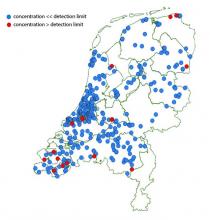Immune suppression by neonicotinoids could be at the root of insect decline
Scientists have identified infectious diseases as a key driver of bee population decline and have shown for the first time the extent to which the diseases are shared with other pollinator groups, in research published this week. Researchers from Royal Holloway, University of London, Oxford University and Cornell University have shown that viruses that are harmful to honeybees are also present in hoverfly pollinators. The study suggests that hoverflies are exposed to the same diseases, and may move the infections around when they feed from the same flowers as the honeybees.










